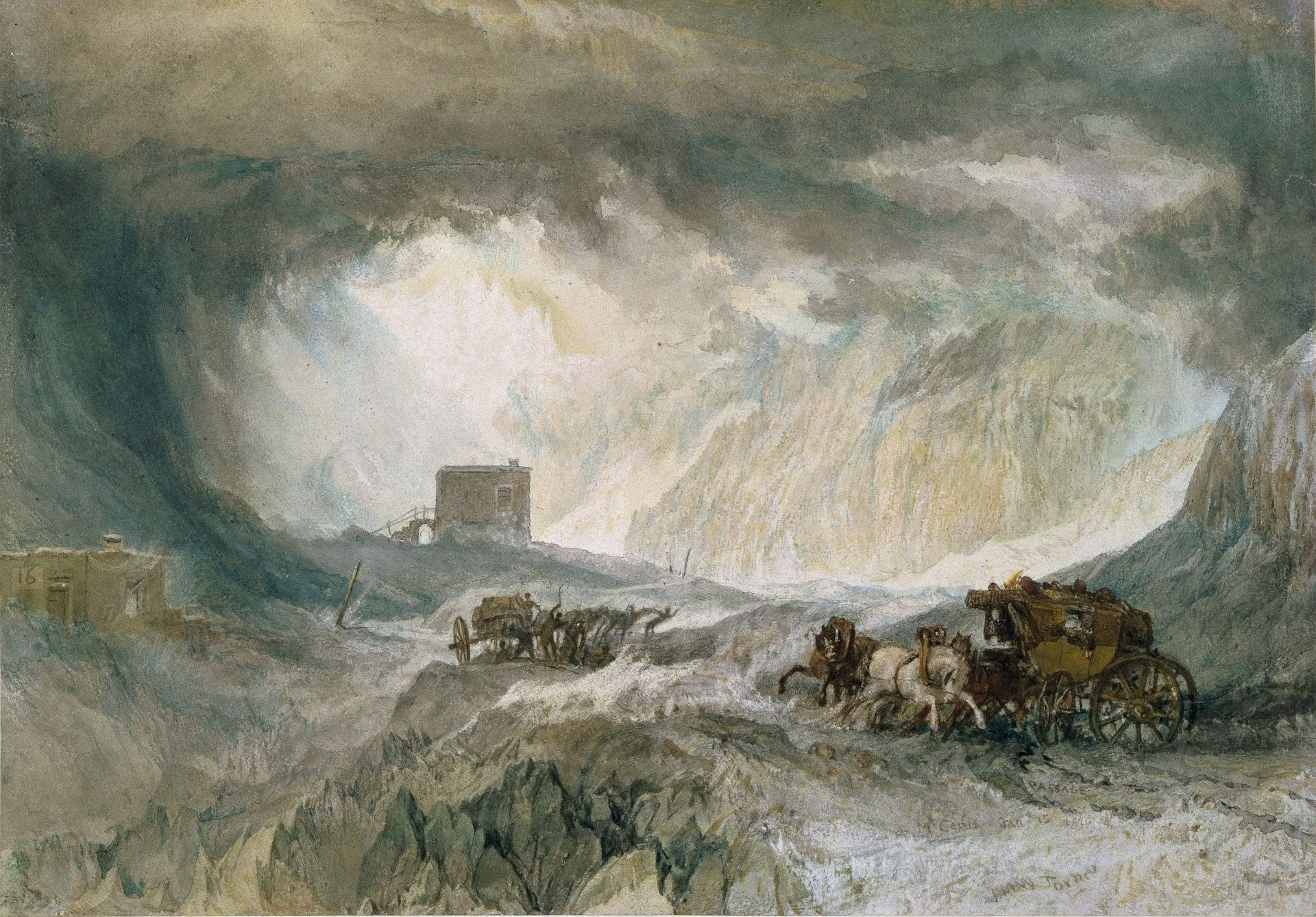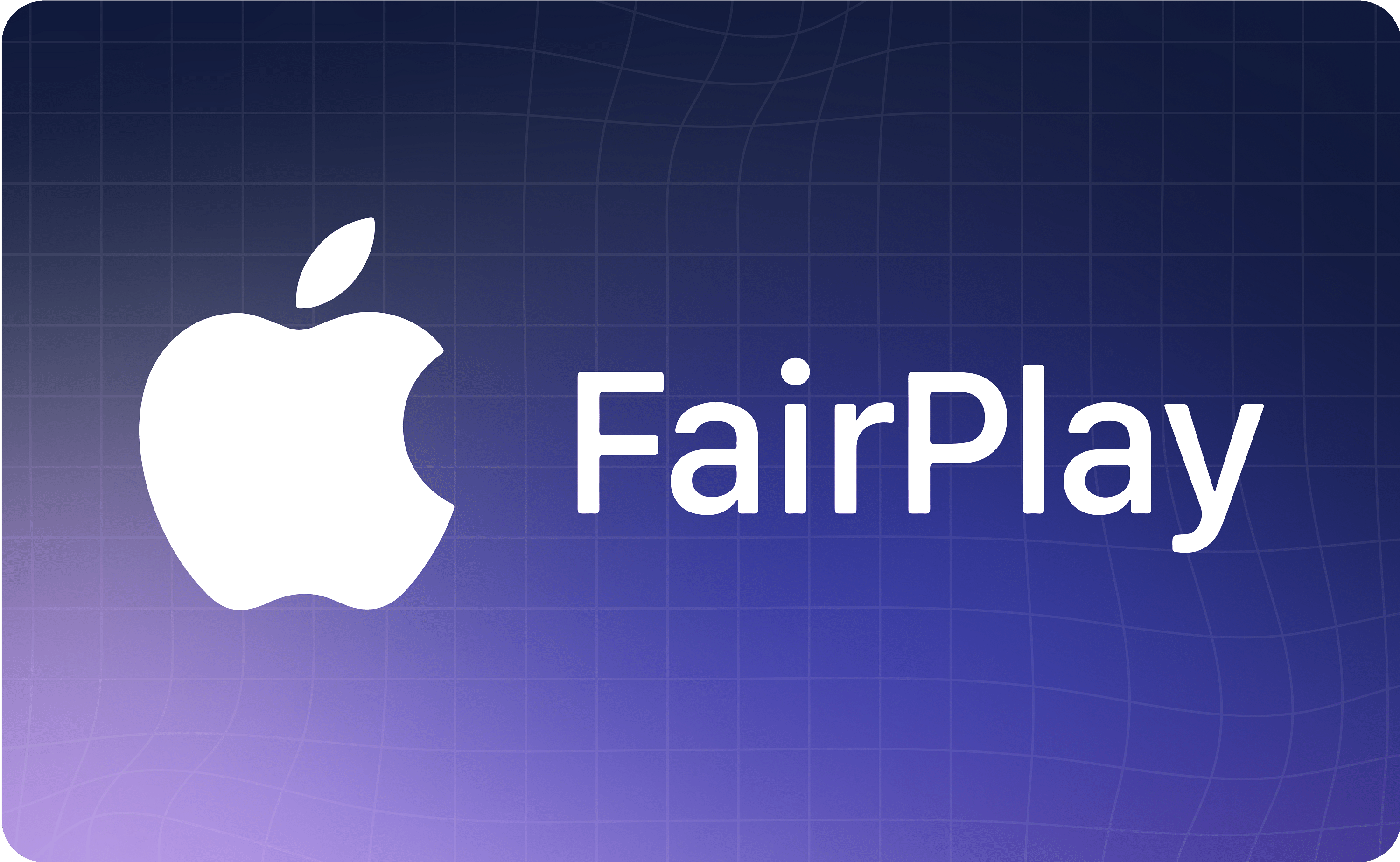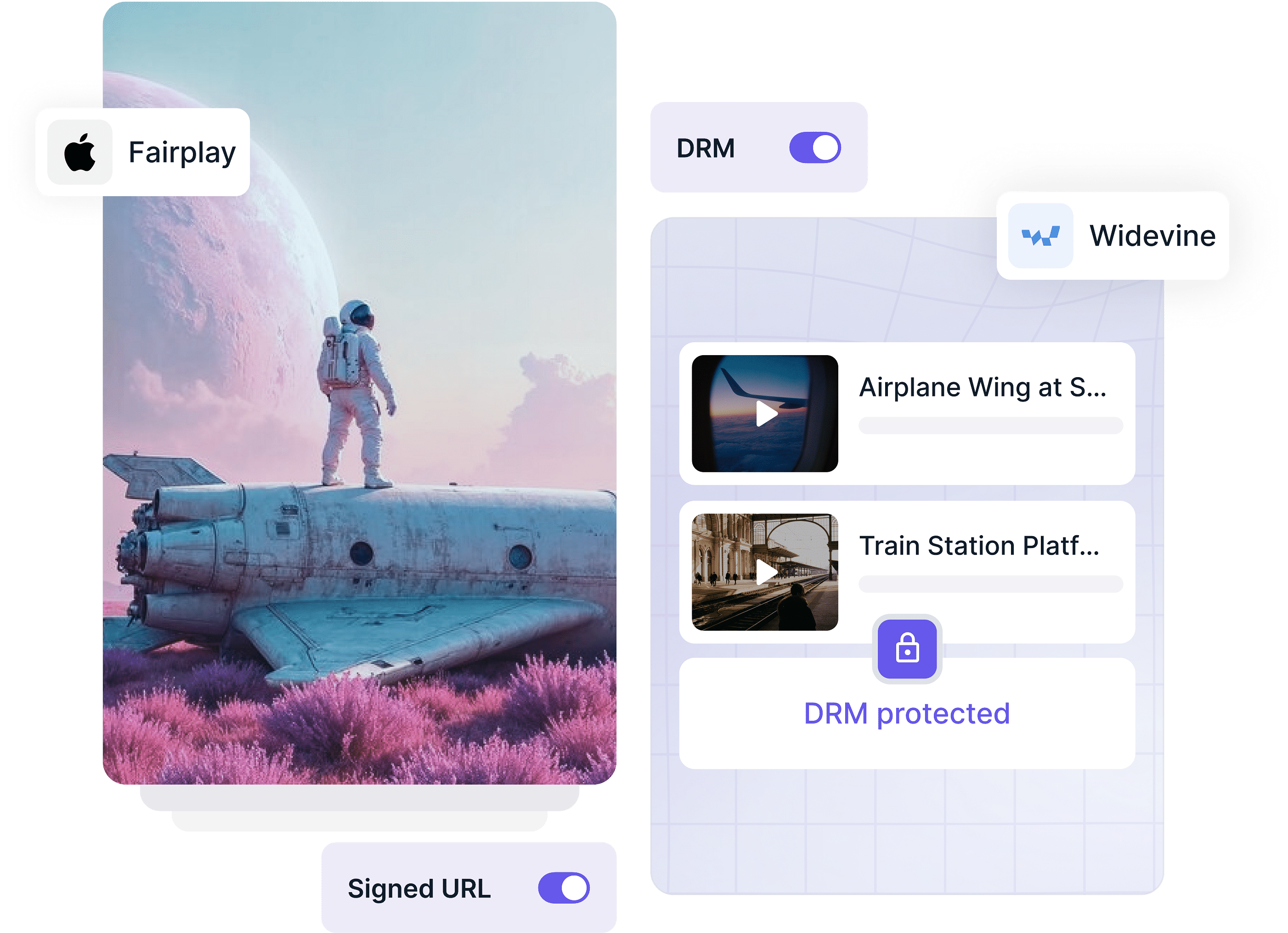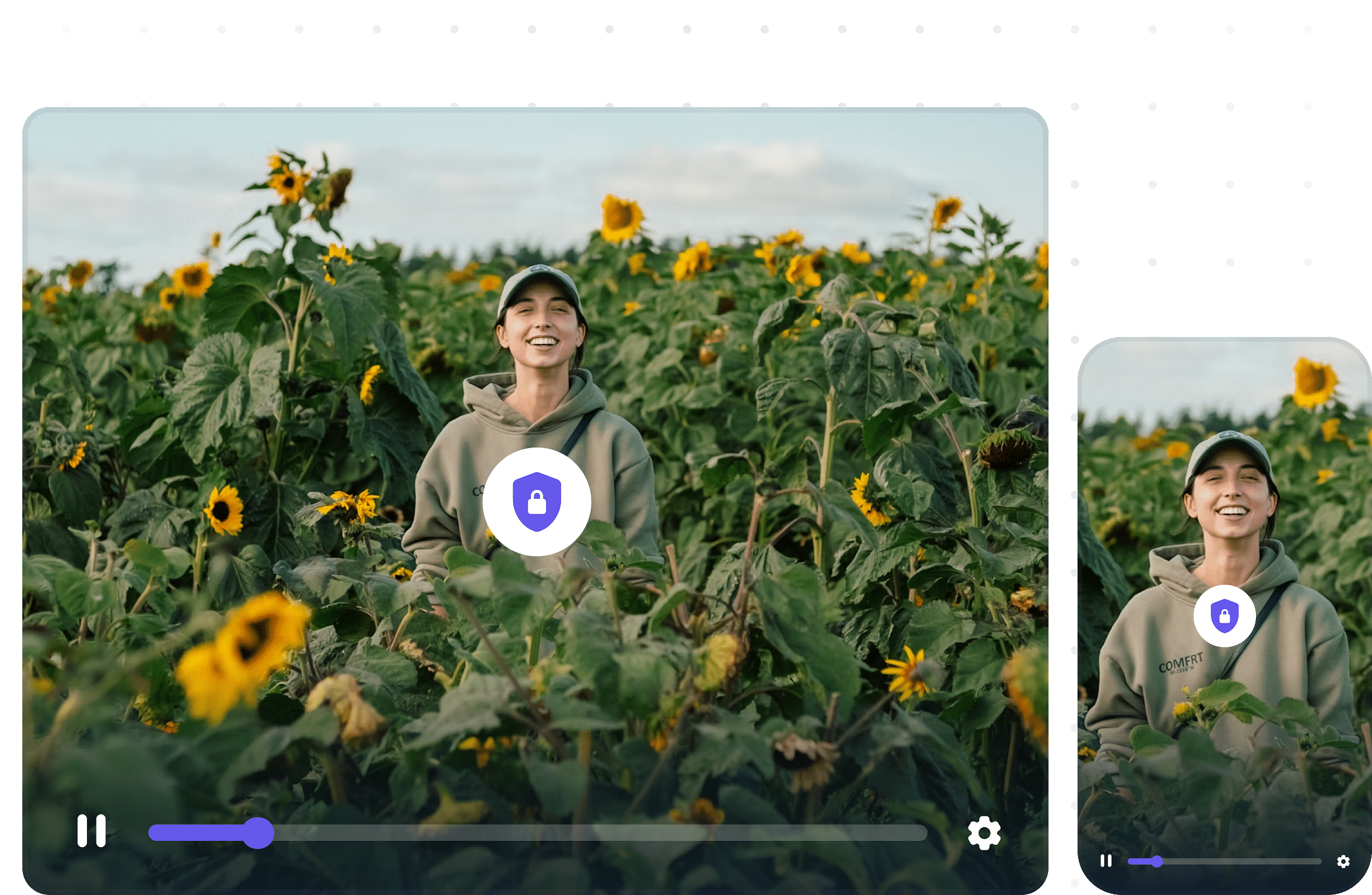The complete guide to DRM
A simple, step-by-step guide to how DRM works, why it matters, and how major platforms use it to keep their content secure.

The DRM workflow
Encrypt the Video
Before a video is streamed or downloaded, it’s encrypted using a secure DRM protocol. This ensures the content is unreadable without the proper decryption key.
Send a License
When a viewer tries to play the video, the DRM system authenticates the user and sends a decryption license if permissions are valid.
Decrypt and Play
The device receives the license, decrypts the content securely, and begins playback, all while preventing downloads or unauthorized copying.

Get the definitive guide to DRM
Learn what DRM is, how it works, where to get it, and if it's the right choice for your content. This whitepaper is your go-to guide whether you're just exploring or ready to implement.
Download the free DRM whitepaperMajor DRM providers in the industry
Google Widevine
Used by Chrome, Android, and most smart TVs, Widevine is one of the most widely adopted DRM systems in the world. Ideal for cross-platform compatibility.
Apple FairPlay
Integrated into Apple’s ecosystem (Safari, iOS, tvOS), FairPlay is a must-have for reaching Apple users while maintaining strict security standards.

Microsoft PlayReady
Microsoft’s DRM solution supports Xbox, and other ecosystems. It’s particularly popular in enterprise and media-heavy environments, but is depricated by windows


Why DRM matters for your video content
In today’s digital world, premium content is constantly at risk. DRM is a foundational tool to ensure your videos are seen only by the right audience and never fall into the wrong hands. Why It’s Important:
- DRM doesn’t stop screen recording, but blocks downloads and unauthorized sharing
- Protects your subscription models and pay-per-view revenue
- Essential for compliance with licensing agreements and copyright regulations
